“Easy Cabinet Lock Solutions: Protect Your Home in Minutes!”
Hey there! Ever had an idea why locking up your cabinet doorways is such a big deal? Well, it is now not just about maintaining your favorite snacks hidden from middle of the night raiders.
Locking shelves is critical for a whole bunch of motives—suppose safety, and specifically if you’ve been given curious children at home.
In this newsletter, we’re going to unencumber the secrets (pun supposedintended!) of different kinds of cupboard locks. Whether you are a DIY enthusiast or just someone seeking to upload a chunk of extra safety at home, this manual’s got you protected. So, let’s get cracking!
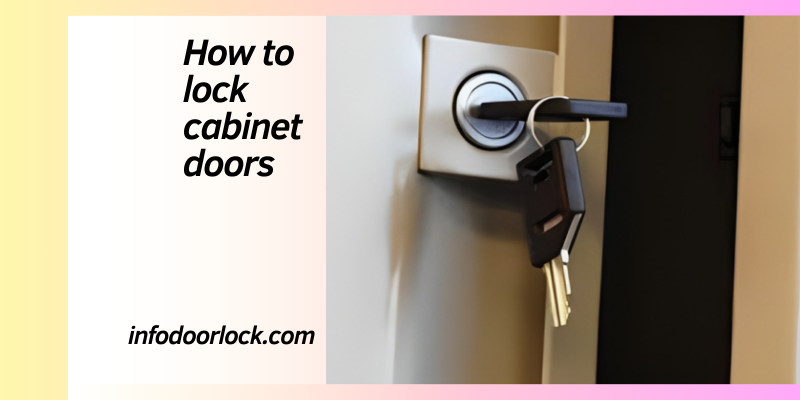
Section 1: Understanding Different Types of Cabinet Locks
Cam Locks
Description:
- These are the ninjas of the lock world. Cam locks are cylindrical and usually operated with a key. They’re super versatile and may be used on numerous shelves, from your kitchen to the workplace.
Benefits:
- Easy to put in, quite cheap, and that they don’t shout, “Hey, I’ve got something treasured in here!” Moreover, their strong nature dissuades inconspicuous prying.
Child Safety Locks
How They Work:
- These locks are a discern’s excellent buddy. They typically connect within the cabinet door, making them invisible from the outside. To open, you normally press down or squeeze a latch—smooth for adults, but not a lot for tiny tots.
Advantages:
- No drilling is required in most cases, and they’re exceptionally clean to use. Plus, you can rest assured that your little explorer may not get into any cabinet-associated mischief.
Magnetic Locks
Features:
- These locks are like magic. You set them up on the cabinet door, and they latch onto a magnetic key. Sleek and nearly invisible, they are exceptional for keeping your shelves classy.
Installation Ease:
- A bit more concerned than the others, however, is not something a fundamental toolkit cannot handle. Plus, the cool thing about ‘unlocking with a magnet’ might simply be well worth it.
Keyed Locks
Traditional, however effective:
- The appropriate antique keyed lock is reliable, straightforward, and does what it says on the tin. You get a lock, a key, and peace of mind.
- Comparison Table/Bullet Points:
Cam Locks:
- Easy to deploy, less expensive, and discreet.
Child safety locks:
- No tools required, invisible from outside, kid-evidence.
Magnetic Locks:
- Invisible installation, precise magnetic operation.
Keyed Locks:
- Time-tested, reliable, and honest operation.
Section 2: Tools and Materials Needed
Alright, before we soar into the sector of locks, let’s make certain you’ve got your toolbox prepared. Here’s what you will need:
Common Tools
Screwdriver:
- A have to-have. Go for it hard and fast if you can; you by no means realize that you may want an extraordinary size.
Drill:
- For the locks that need a bit more than just screwing in.
Measuring Tape:
- Precision is fundamental. Literally.
Pencil or marker:
- For those vital markings.
Materials:
Specific types of locks:
- Depending on your preference, cam, infant protection, magnetic, or keyed locks.
Screws:
- They generally come with the locks, but it is desirable to have extras.
Lock Strike Plates:
- If your lock desires them,.
Safety Equipment:
Gloves:
- Keep the fingers secure.
Goggles:
- Eye safety is not a funny story while you’re drilling.

Section 3:Preparing Your Cabinet for Lock Installation
Now that you’re equipped, let’s prep your cupboard:
Cleaning:
- Wipe down the cabinet door. An easy floor guarantees higher adhesion and a smoother installation.
Measuring the Cabinet Door:
- Use your measuring tape to find the candy spot on your lock. This is essential for alignment and capability.
Marking drill points:
- If your chosen lock desires drilling, mark the factors cautiously with your pencil or marker. Double-test measurements—better safe than sorry!
Section 4: Step-with the aid of-Step Installation Guide
Cam Locks
Drill a hole:
- If your cabinet doesn’t have a pre-drilled hollow, make one where you’ve marked it.
Insert the lock:
- Slide the cam lock into the hole.
Secure the cam:
- Fasten the cam at the back of the lock. Test it to make certain it latches properly.
Child Safety Locks
Clean the area:
- Make sure the interior of your cupboard is smooth and dry.
Peel and stick:
- Most infant protection locks have adhesive backings. Just peel, stick, and press firmly.
Adjustment:
- Check the alignment and modify if necessary.
Magnetic Locks
Drill for the lock:
- If needed, drill holes for the lock body.
Install the lock:
- Secure the lock in the cupboard door.
Place the magnet:
- Position the magnetic secret in the corresponding southside cabinet.
Keyed Locks
Drill the keyhole:
- Make a hole for the important thing if required.
Fit the lock:
- Place the lock and screw it in securely.
Test the key:
- Ensure the lock and key paintings easily.
Tips for a Secure Fit:
Take Your Time:
- Rushing may lead to mistakes. Patience is your friend.
Check Alignment:
- Misalignment can cause a lock to malfunction.
Test Thoroughly:
- Before remaining up, test each lock numerous times.
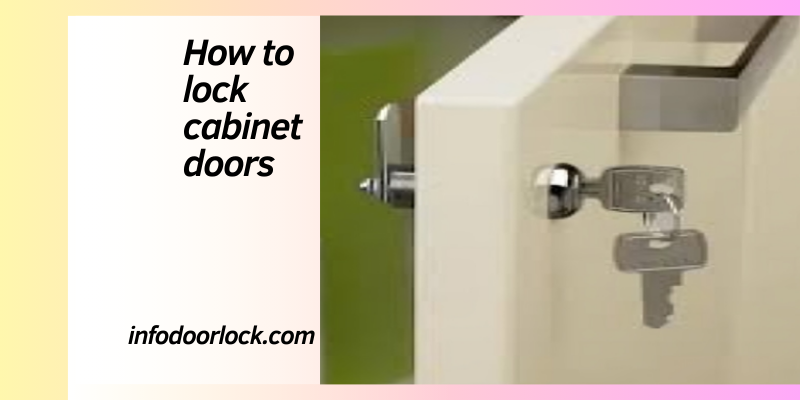
Section 5: Testing and Troubleshooting
Once you’ve got hooked up your new locks, it’s not simply ‘lock and depart.’ Here’s the way to ensure the whole lot’s operating just right:
Testing the Lock’s Functionality:
Lock and Unlock:
- Do this several instances. The mechanism must be smooth and easy.
Check Alignment:
- The lock need to align perfectly with the strike plate or cupboard body.
Test with Different Scenarios:
Close and open the cabinet as you would in daily use.
Common Issues and Their Solutions:
Sticky Locks:
- If the lock is difficult to turn, take a look at it for misalignment or lubricate it with graphite powder.
Misaligned Locks:
- Loosen the screws, adjust the location, and then retighten them.
Weak Adhesive (for stick-on locks):
- Clean the surface very well before installation, or use additional adhesive.
Section 6: Maintenance and Safety Tips
Keeping your locks in tip-pinnacle form is less complicated than you suspect:
Regular Maintenance Advice:
Regular Checks:
- Every few months, give your locks a brief as soon as-over to make certain they’re nevertheless steady.
Cleaning:
- Wipe down the locks and surrounding areas to save on dust construct-up.
Lubrication:
- For keyed or cam locks, a bit of lubricant allows things to shift smoothly.
Safety Precautions:
Be mindful of Keys:
- If you’re using keyed locks, keep track of the keys. A lost key can be a real headache.
Child Lock Safety:
- Regularly check toddler protection locks for wear and tear, particularly if you have little adventurers around.

Conclusion : How To Lock Cabinet Doors
And there you’ve got it—your shelves are now as secure as a citadel (or near enough!). Locking your cupboard doors is more than only a protection degree; it is approximately peace of mind, protection, and occasionally, maintaining those cookies out of sight. Remember, the right lock can make all of the distinction, and a bit of regular protection goes a long way. So pass ahead, follow this guide, and lock in that security (pun intended!). Your future self will thank you.
Call to Action :How To Lock Cabinet Doors
Now it is your turn! Have you established cabinet locks before? Do you have any advice, or is there a question that is still unanswered? Drop a comment beneath. Sharing studies facilitates anyone, and who knows, your perception might be just the issue a person else desires. Let’s free up this conversation together!
FAQs On How To Lock Cabinet Doors
1. Can I install these locks myself, or do I need to rent a professional?
Absolutely, you can install those locks yourself! Most cabinet locks are designed for easy DIY installation. Just follow the steps in this guide. However, if you’re no longer comfortable with tools or have a complicated locking machine in mind, hiring a professional is a secure bet.
2. How do I select the right kind of lock for my shelves?
Consider what you’re securing. For wellknown domestic safety, cam or keyed locks are high-quality. If baby protection is your priority, toddler safety locks or magnetic locks are best. Think about the level of security you need and the style of your shelves.
3. Are magnetic locks secure around digital gadgets?
Generally, sure. The magnets in those locks are sturdy enough to steady the lock but no longer so effective that they have an effect on electronic devices in nearby cabinets.
4. How often ought I take a look at or keep my cupboard locks?
It’s a suitable exercise to test your locks every three-6 months. Look for signs of wear, unfastened components, or alignment issues. Regular renovation can substantially extend the existence of your locks.

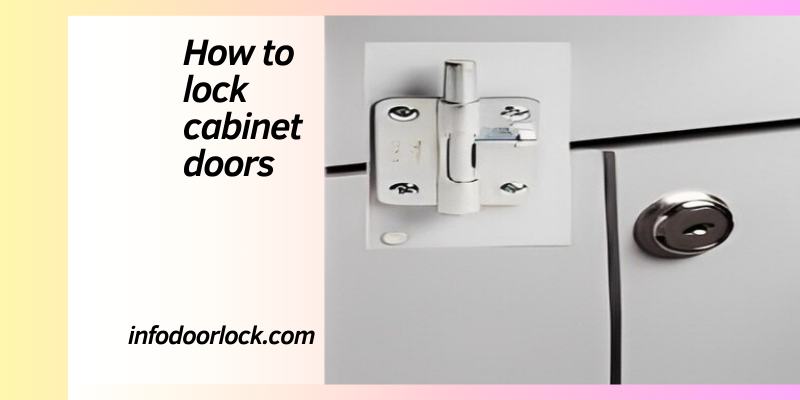
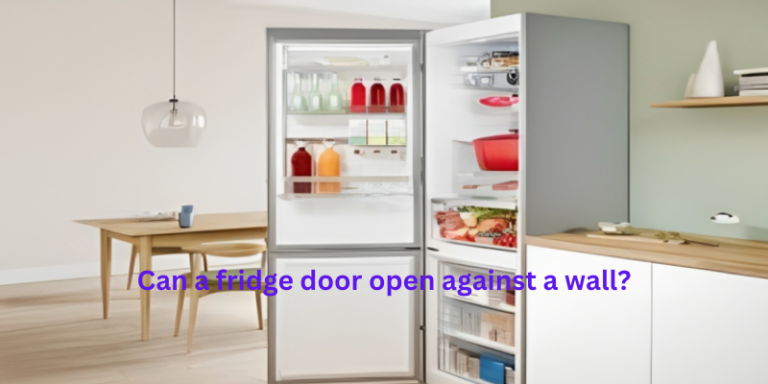
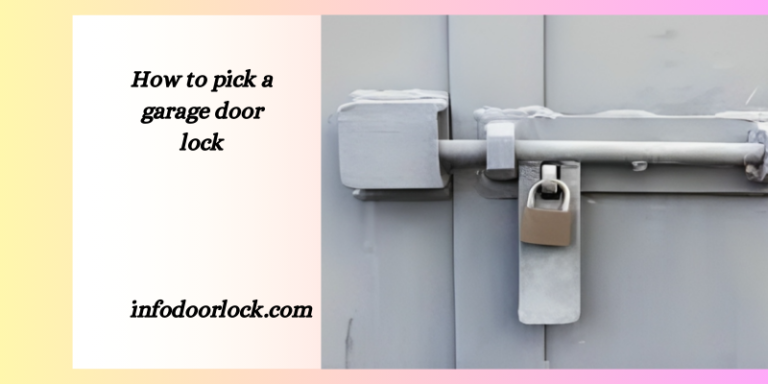
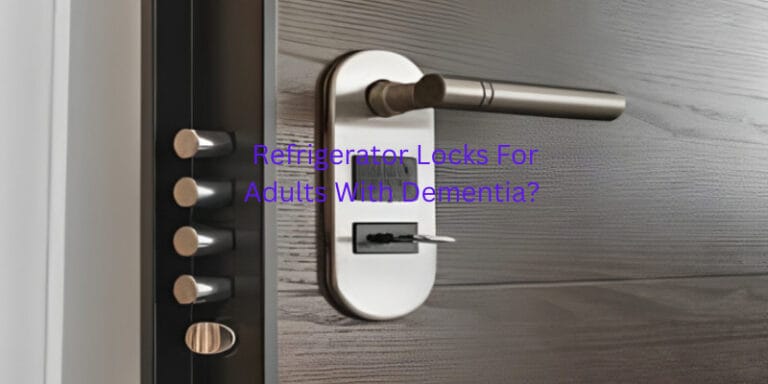
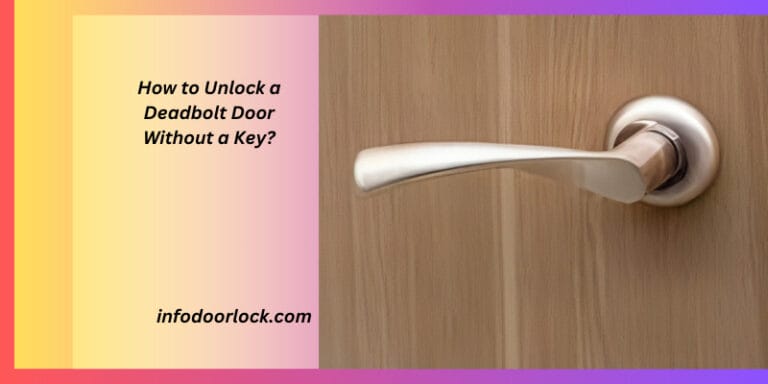
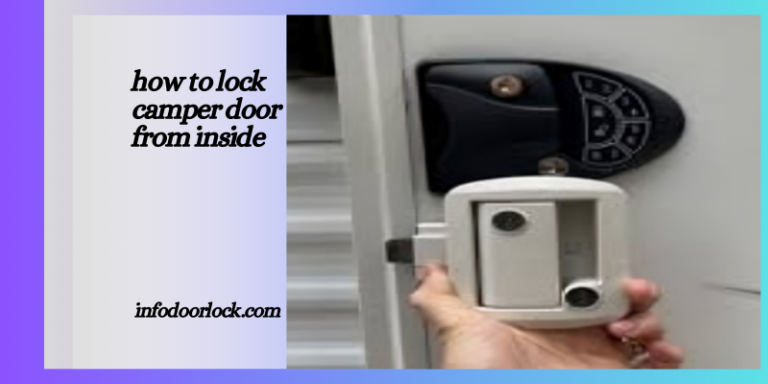

One Comment